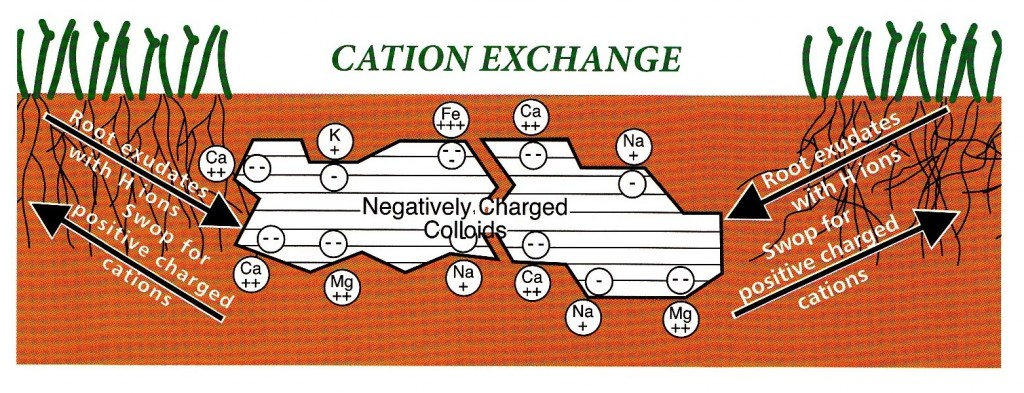
Providing better understanding of soil fertility and plant nutrition – Soil is our most precious resource
Total Exchange Capacity (TEC)
Total Exchange Capacity reveals the soils potential to hold and exchange nutrients. The clay colloids, invisible to the naked eye, are the negatively charged exchange sites on which the positive cations; calcium, magnesium, potassium, sodium, trace elements and hydrogen are held.
TEC’s can vary from as low as 3 to over 40 in the space of a few fields. The higher the TEC the more cations are required to reach the desired amount for the particular soil, standard soil tests don’t take into account this change in soil and holding capacity, therefore it can lead to an out of balance soil and various issues from that.
Colloidal Organic Matter (COM)
Colloidal Organic Matter (COM) is the humic fraction of organic matter and is the key to soil fertility enabling effective interaction between the Chemical, Physical and Biological components of the soil. Ideally should be 5-10%. COM is also an important source of trace elements and food for soil microbes.

Cation exchange process
In the Cation Exchange process the plant’s roots absorb many of the nutrients essential for growth. The process works through the secretion of exudates by the root hairs which contain positively charged hydrogen ions. The hydrogen ions are effectively “traded” by the plant for the positively charged cations of calcium, magnesium, potassium, sodium and trace elements. The plant absorbs 70% of the cations it needs through the cation exchange process, hence imbalances of Cations on the clay colloids, also known as the ‘base’, prevents the plant from taking up a proper balance of essential nutrients.
Base Saturation
Base Saturation measures the percentage of the differences cations on the clay colloids. Soil behaviour will often reflect the relationship of the cations on the base e.g. soils with high calcium on the base will tend to be open whereas soils with high magnesium will tend to be sticky and difficult to work.
Understanding pH
pH is only a measure of hydrogen indication the degree of acidity of alkalinity. A high pH soil is not necessarily high in calcium. The exchange sites can be occupied by: magnesium, sodium and potassium displacing calcium and hydrogen. Therefore despite a high pH plants can be short of calcium. pH measurement alone is an insufficient guide to calcium status. are cation exchange rebalancing soil survey looks at base saturation in detail to check which cations are actually deficient and if calcium is short in which form it should be applied.
Call us on 07977 139242 or contact us for more info and pricing
